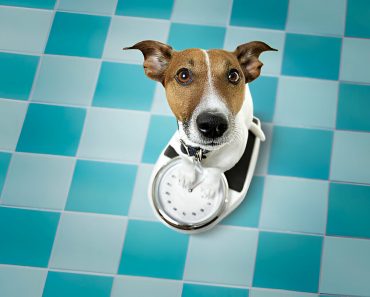In the vast and diverse world of canines, few breeds capture the hearts and minds of dog lovers quite like the Labrador Retriever. From their endearing demeanor to their remarkable intelligence, these dogs have secured a special place in households around the globe. But what exactly defines a Labrador, and what secrets lie within their lineage? Join us on a journey as we delve deep into the essence of Labrador Retrievers, exploring their origins, characteristics, lifespan, and everything in between.

Labrador Retriever
Decoding the Term “Labrador”
When you mention “dog Labrador,” you’re likely referring to the breed of dog known as the Labrador Retriever. This breed, commonly referred to simply as a “Labrador” or “Lab,” is one of the most popular dog breeds worldwide. Here’s a bit more about Labrador Retrievers:
- Breed Characteristics: Labrador Retrievers are known for their friendly and outgoing nature. They’re highly intelligent, trainable, and good-natured, making them excellent family pets, service dogs, and working dogs.
- Appearance: Labradors are medium to large-sized dogs with a sturdy build. They typically have short, dense coats that come in three primary colors: black, yellow, and chocolate. Their otter-like tails and friendly expressions are iconic features of the breed.
- History: Originally bred as working dogs to retrieve game for hunters, particularly waterfowl, Labradors have a strong retrieving instinct. They’re also known for their love of water and swimming.
- Temperament: Labrador Retrievers are known for their even temperaments and gentle dispositions. They’re generally good with children and other pets, making them popular choices for families.
- Versatility: Labradors excel in various roles, including as service dogs for the disabled, search and rescue dogs, therapy dogs, and detection dogs for tasks such as drug detection or bomb detection.
In summary, when someone mentions a “dog Labrador,” they’re typically referring to a Labrador Retriever, a versatile and popular breed known for its friendly nature, intelligence, and trainability.
Lifespan of Labrador Retrievers
One of the most common inquiries among prospective Labrador owners is the lifespan of these beloved companions. On average, Labrador Retrievers have a lifespan ranging from 10 to 12 years. However, with proper care, nutrition, and regular veterinary check-ups, many Labradors surpass this expectancy and live well into their teens.
It’s worth noting that factors such as genetics, diet, exercise, and overall health play significant roles in determining a Labrador’s lifespan. Providing a nurturing environment and addressing any health concerns promptly can help extend your furry friend’s years of companionship.
Origin and History of Labrador Retrievers
The Labrador Retriever, commonly known as the “Labrador” or “Lab,” originated in Newfoundland, Canada, rather than Labrador as the name might suggest. The breed’s history dates back to the early 19th century, where they were developed by fishermen and hunters in the region.
Here’s a brief overview of the origin and history of Labrador Retrievers:
- Early Development: Labrador Retrievers were originally bred by fishermen and hunters in Newfoundland during the 19th century. They were selectively bred from a mix of St. John’s Water Dogs (now extinct) and various other retrieving breeds such as the Newfoundland Dog and possibly the Portuguese Water Dog.
- Purpose: Labrador Retrievers were primarily bred as working dogs to assist fishermen and hunters. Their main tasks included retrieving fishing nets, hauling ropes, and retrieving game during hunts, particularly waterfowl.
- Introduction to England: In the early 19th century, Labrador Retrievers were brought to England by English ships returning from Newfoundland. There, they gained popularity among British nobility as hunting companions and retrievers. English breeders further refined the breed’s characteristics, focusing on their retrieving abilities, temperament, and appearance.
- Recognition and Popularity: Labrador Retrievers gained recognition from breed clubs and kennel clubs in the late 19th and early 20th centuries. The breed’s popularity continued to grow, both as a working dog and as a family pet, due to their friendly temperament, intelligence, and versatility.
- Modern Role: Today, Labrador Retrievers are one of the most popular dog breeds worldwide. They excel in various roles, including hunting, retrieving, assistance and service work, search and rescue, therapy, and as beloved family pets.
Labrador Retrievers are renowned for their friendly and outgoing nature, intelligence, loyalty, and adaptability. Their working heritage and versatility make them suitable for a wide range of tasks and environments, contributing to their enduring popularity as a beloved canine companion.

Labrador Retriever
Size and Physical Characteristics
Labrador Retrievers are medium to large-sized dogs with a sturdy build and distinctive features. Labrador Retrievers are known for their distinct physical attributes :
- size: adult males generally reach heights ranging from 21.5 to 24.5 inches (55 to 62 cm) at the shoulder, with females slightly smalle. They generally weigh between 55 to 80 pounds (25 to 36 kg), with males being larger and heavier than females.
- Body: Labradors have a muscular and athletic build, with a deep chest and a broad, strong back. They have a well-balanced body structure, giving them agility and endurance.
- Head: Labradors have a distinctive broad and slightly rounded skull. Their muzzle is strong and fairly wide, tapering gradually towards the nose. They typically have medium-sized, expressive brown or hazel eyes and drop ears that hang close to the head.
- Coat: Labradors have a short, dense, and water-resistant double coat that provides insulation and protection in various weather conditions. The outer coat is straight, dense, and somewhat coarse, while the undercoat is soft and insulating. The hallmark of Labrador Retrievers lies in their coat diversity, with three primary colors: black, yellow, and chocolate. There can also be variations within these colors, such as silver and fox red.
- Tail: Labradors are known for their distinctive “otter” tail, which is thick at the base and tapers towards the tip. Their tails are strong and muscular, often wagging vigorously when they’re happy or excited.
- Gait: Labrador Retrievers have a smooth, effortless gait with good reach and drive. They move with purpose and coordination, reflecting their athletic abilities and working heritage.
Overall, Labrador Retrievers have a robust and well-proportioned appearance, combining strength, athleticism, and elegance. Their physical characteristics make them well-suited for various tasks, including hunting, retrieving, and companionship.
Personality and Temperament
Labrador Retrievers are celebrated for their friendly, outgoing, and affectionate demeanor . Here are some key personality traits and temperament characteristics commonly associated with this breed:
- Friendly: Labradors are known for their gentle and sociable disposition. They typically get along well with people of all ages, including children, and are often described as “people-oriented” dogs.
- Playful: Labradors have a playful and exuberant personality, even well into adulthood. They love to play fetch, tug-of-war, and engage in other interactive games with their owners.
- Intelligent: Noteworthy for their intelligence, Labrador Retrievers eagerly seek to please, rendering them highly trainable . They respond well to positive reinforcement techniques and thrive on mental stimulation and learning new tasks.
- Energetic: Labradors have a lot of energy and require regular exercise to keep them physically and mentally stimulated. They enjoy activities like walking, running, swimming, and playing fetch, making them excellent companions for active individuals or families.
- Loyal: Labradors are known for their loyalty and devotion to their families. They form strong bonds with their owners and are often protective of them, although they’re usually too friendly to be effective guard dogs.
- Good with Other Pets: Labradors typically get along well with other dogs and pets, especially if they’re socialized from a young age. Their amicable disposition and lack of aggression make Labrador Retrievers a fitting choice for households with multiple pets.
- Adaptable: Labradors are known for their adaptability to various living environments, including apartments, suburban homes, and rural settings. They’re equally comfortable lounging on the couch or exploring the great outdoors.
- Food Motivated: Labradors have a reputation for being food motivated, which can be useful for training purposes but also means they may have a tendency to overeat if not monitored.
Overall, Labrador Retrievers are beloved for their joyful and amiable personalities, making them excellent family pets, therapy dogs, service dogs, and companions for individuals of all walks of life.

Labrador Retriever
Facts and Information About Labrador Dog Breeds
- Most Popular Dog Breed: Labrador Retrievers consistently rank as one of the most popular dog breeds worldwide. Their friendly nature, intelligence, and versatility contribute to their widespread appeal.
- Original Purpose: Labradors were originally bred as working dogs to assist fishermen and hunters in Newfoundland, Canada. They were prized for their retrieving abilities, particularly in waterfowl hunting and fishing.
- Three Recognized Colors: The American Kennel Club (AKC) recognizes three primary coat colors for Labrador Retrievers: black, yellow, and chocolate. While these are the standard colors, variations such as silver and fox red also exist.
- Water-Loving Dogs: Labradors have a natural affinity for water, thanks to their history of retrieving game from lakes and rivers. They’re excellent swimmers and often enjoy activities like swimming, fetching toys from the water, and playing in the waves.
- Service and Assistance Dogs: Labradors are widely used as service dogs and assistance dogs due to their intelligence, trainability, and gentle nature. They assist individuals with disabilities, including visual impairments, mobility limitations, and medical conditions like diabetes.
- Search and Rescue Work: Labradors excel in search and rescue operations due to their keen sense of smell, endurance, and agility. They’re often trained to locate missing persons, detect drugs or explosives, and assist in disaster response efforts.
- Talented Athletes: Labradors are versatile athletes capable of participating in various dog sports and activities. They excel in obedience trials, agility competitions, dock diving, flyball, and field trials, showcasing their athleticism and intelligence.
- Celebrity Status: Labrador Retrievers have appeared in numerous movies, TV shows, and advertisements over the years. Famous Labradors include Marley from “Marley & Me,” Buddy from “Air Bud,” and Shadow from “Homeward Bound: The Incredible Journey.”
- Record Holder: A Labrador named Endal gained fame for his remarkable abilities as a service dog. Endal received numerous awards and accolades, including the prestigious PDSA Gold Medal, making him the most decorated dog in the world.
- Longevity: While the average lifespan of Labrador Retrievers is around 10 to 12 years, some individuals have lived well into their teens with proper care and genetics.
- Versatile Working Dogs: Labrador Retrievers are renowned for their versatility and adaptability, thriving in diverse environments and excelling in various roles, including hunting, retrieving, and assistance work.
- Exercise Requirements: Due to their active nature, Labradors require regular exercise to maintain their physical and mental well-being. Daily walks, play sessions, and interactive games are essential for keeping these energetic dogs happy and healthy.
- Nutritional Needs: Providing a balanced diet is crucial for ensuring the long-term health of Labrador Retrievers. High-quality dog food that meets their nutritional requirements, along with appropriate portion control, can help prevent obesity and related health issues.
- Grooming Tips: While Labrador Retrievers boast a relatively low-maintenance coat, regular grooming is still necessary to keep their fur clean and healthy. Brushing a Labrador’s coat a few times a week helps remove loose hair and prevents matting, particularly during shedding seasons.
- Health Considerations: Like all breeds, Labrador Retrievers are prone to certain health conditions, including hip dysplasia, elbow dysplasia, and obesity. Routine veterinary care, including vaccinations, screenings, and preventative measures, can help mitigate these risks and ensure a long and fulfilling life for your furry friend.
Labrador Retrievers epitomize loyalty, intelligence, and companionship, setting a standard for canine excellence. From their humble beginnings as working dogs in the fishing villages of Newfoundland to their status as beloved family pets worldwide, Labradors have left an indelible mark on the hearts of dog lovers everywhere. Whether bounding through fields in pursuit of game or curled up at your feet by the fireside, Labrador Retrievers embody the very essence of canine companionship, enriching our lives with their unwavering love and devotion.






